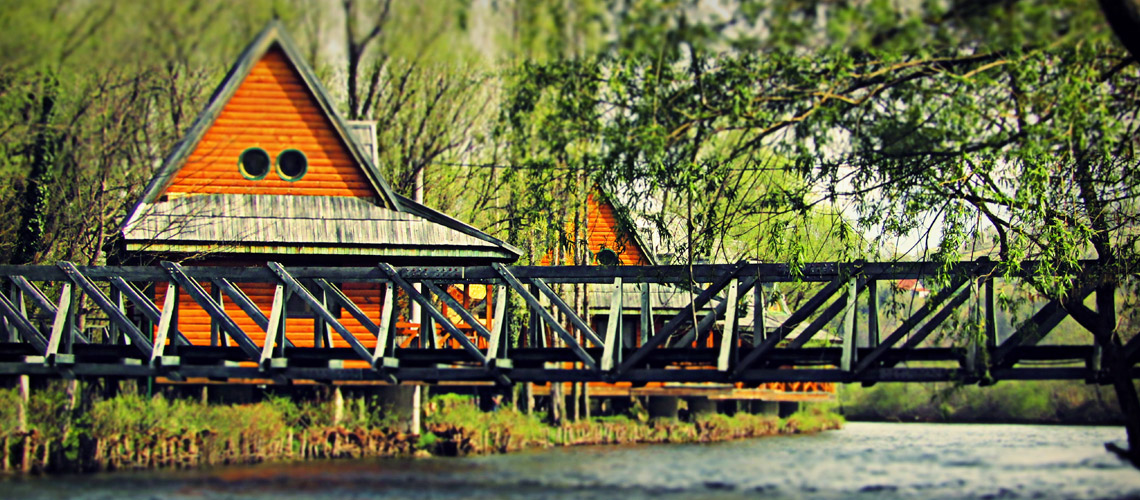About Ribnik
Načelnik
DUŠKO DAKIĆ
BIOGRAFIJA:
Rođen je 1979. godine u opštini Ključ. Osnovnu i srednju školu završio je u Opštini Ribnik.
Visoko obrazovanje kao i zvanje magistra tehničkih nauka stekao na Tehničkom fakultetu „Mihajlo Pupin“, Univerzitet u Novom Sadu.
Radio u privredi na poslovima šefa prodaje i direktora drvne industrije.
Zaposlen u Upravi opštine Ribnik od 2006. godine, gdje je obavljao poslove šefa Odsjeka za razvoj privrede i preduzetništva.
Nakon toga obavljao funkciju Načelnika odjeljenja za opštu upravu u dva mandata.
Funkciju Predsjednika Skupštine opštine Ribnik obavljao u periodu od 2016. do 2024. godine.
Oženjen, otac troje djece.

Meet the Ribnik
Geographical location
The municipality of Ribnik is located in the northwestern part of the Republika Srpska and is one of the border and peripheral municipalities of this part of the Republika Srpska.
Historical development
Ribnik as a settlement originated on the left bank of the river Ribnik, which springs a few kilometers south of the settlement. It received the status of the municipality of Ribnik for the first time in 1918. In the Kingdom of Yugoslavia was part of the Vrbas Banate.
In various administrative variants, it retained the status of the municipality of Ribnik until 1965, when due to the rationalization of the then Republic of Bosnia and Herzegovina, the area of the municipality of Ribnik together with Sanica was annexed to the Municipality of Kljuc. This resulted in a slowdown in the economic and agricultural development of Ribnik. The Dayton Peace Agreement, signed in 1995, established an entity line that divided the area of the municipality of Kljuc into two parts, the municipality of Ribnik in the Republika Srpska and the municipality of Kljuc in the Federation of BiH.
By gaining the status of a municipality, Ribnik began to develop and today has the character of a stable and economically self-sustaining environment.
Size
The municipality of Ribnik covers an area of 496 km2 and according to this characteristic is on the 23rd largest municipality in the Republic of Srpska. Geographically, the main stamp of this area is given by the mountains of the Dinaric Belt and the rivers Sana and Ribnik.
Hydrography
On the territory of the municipality there are springs of two mountain rivers Sana and Ribnik and two rivers Stanička and Banjica. The western parts of the mountainous terrain abound in a multitude of sources of drinking water. Most of these sources have not been used.
Retaining the snow cover until the beginning of summer has a positive effect on the feeding of watercourses in that area, but also on the intensive growth of coniferous forests in the first place. The majority of settlements in the area and thus industrial facilities are located around the river Sana, while the rest of the area is arable land, forest complexes, meadows, pastures and forest barren lands.
Relief
About 70% of the area of the municipality of Ribnik belongs to the hilly-mountainous belt, ie it is located at an altitude of over 500 m, and the rest is located around the main rivers. Altitude ranges from 260 to 1480 meters.
The municipality is rich in forests, water and untouched nature. Forests cover 32,000 ha or 64% of the municipality, which means that the municipality of Ribnik participates in the total wealth of RS forests with 13%. Almost all types of trees grow in the forest complex, and they are the most important and of the highest quality due to the geographical climate and the composition of the land of the high forest of fir and spruce, and high-quality beech, maple, elm, ash and linden. A good part of the municipality is overgrown with low forests with large plantations of coniferous crops with mostly pine content and smaller amounts of larch.
Climate
Mostly temperate-continental, especially in the lower parts where summers are warmer and winters are milder compared to areas with higher altitudes.
The amount of precipitation during the year is over 1000 mm.
While areas with higher altitudes have a mountain climate where winters are very harsh with large amounts of snow that lingers in some places until June.
Roads
In terms of traffic and geography, the area of the municipality of Ribnik relies on the main road (M-5) Bihać - Jajce, which passes through one part of the municipality in the length of 17 km.
The road Čađavica - Banja Luka leans on this road. This road leads to Banja Luka by a 50 km long mountain asphalt road.
An asphalt road of special interest to the Republika Srpska from Zableće to Vrbljani passes through the Municipality.
Population
According to the 1991 census, there were about 7,430 inhabitants in 23 settlements in today's areas of the municipality of Ribnik, with an ethnic composition of 99.5% Serbs and 0.5% Muslims.
About 9,300 people with a similar ethnic composition now live in the municipality.
According to tradition, the population is mostly engaged and has work experience in forestry and wood industry, then in agriculture, and most of that in animal husbandry.
Education
There are three primary schools and a high school center on the territory of the municipality. The schools are as follows:
- Elementary school "Petar Kocic", Sitnica, with one regional school.
- Elementary school ,, Nikola Mačkić ,, Previja, with two branch schools.
- Elementary school "Desanka Maksimović", Ribnik, with four regional schools.
- High school center "Lazar Đukić" Ribnik
Healthcare
Basic health care is provided in the public health institution "Health Center Ribnik". In addition, there are field clinics in Sitnica, Previja, Donji Vrbljani and Gornji Vrbljani. Specialist services are provided within the Health Center by visits of specialists from larger hospital centers.
The municipality opted for a model of family medicine, and in that direction a new facility of the health center in Ribnik was built, which should improve the quality of services to citizens.
Territorial organization of the Municipality:
The municipality is territorially organized in five local communities:
Sitnica Local Community,
Crkvina Local Community,
Previja Local Community,
Local community Ribnik i
Local community Vrbljani.
All local communities have local community councils. Members of local community councils are elected by citizens by direct voting at local community assemblies. The work of local communities is managed by the President of the local community council. Administrative and professional tasks for local community councils are performed by the technical secretary of the local community as a professional professional employee in the municipal administrative service. Each of the local communities includes several inhabited places. Ribnik is characterized by an ecologically clean environment, especially the richness of water and forests, thanks to which tourism is developed, primarily hunting and fishing. As a fishing destination, Ribnik is one of the most famous in Bosnia and Herzegovina and beyond. In addition to fishing and hunting tourism in Ribnik attracts a large number of lovers of hunting and nature. There are rare game on our grounds such as bear, black grouse and roe deer. Thanks to sport fishing and hunting, Ribnik is visited annually by a significant number of foreign tourists.
After 15 years of independent existence, the Municipality has acquired the character of an economically self-sustaining environment. Today, Ribnik is a municipality that has a clear perspective of economic, cultural and environmental development.


